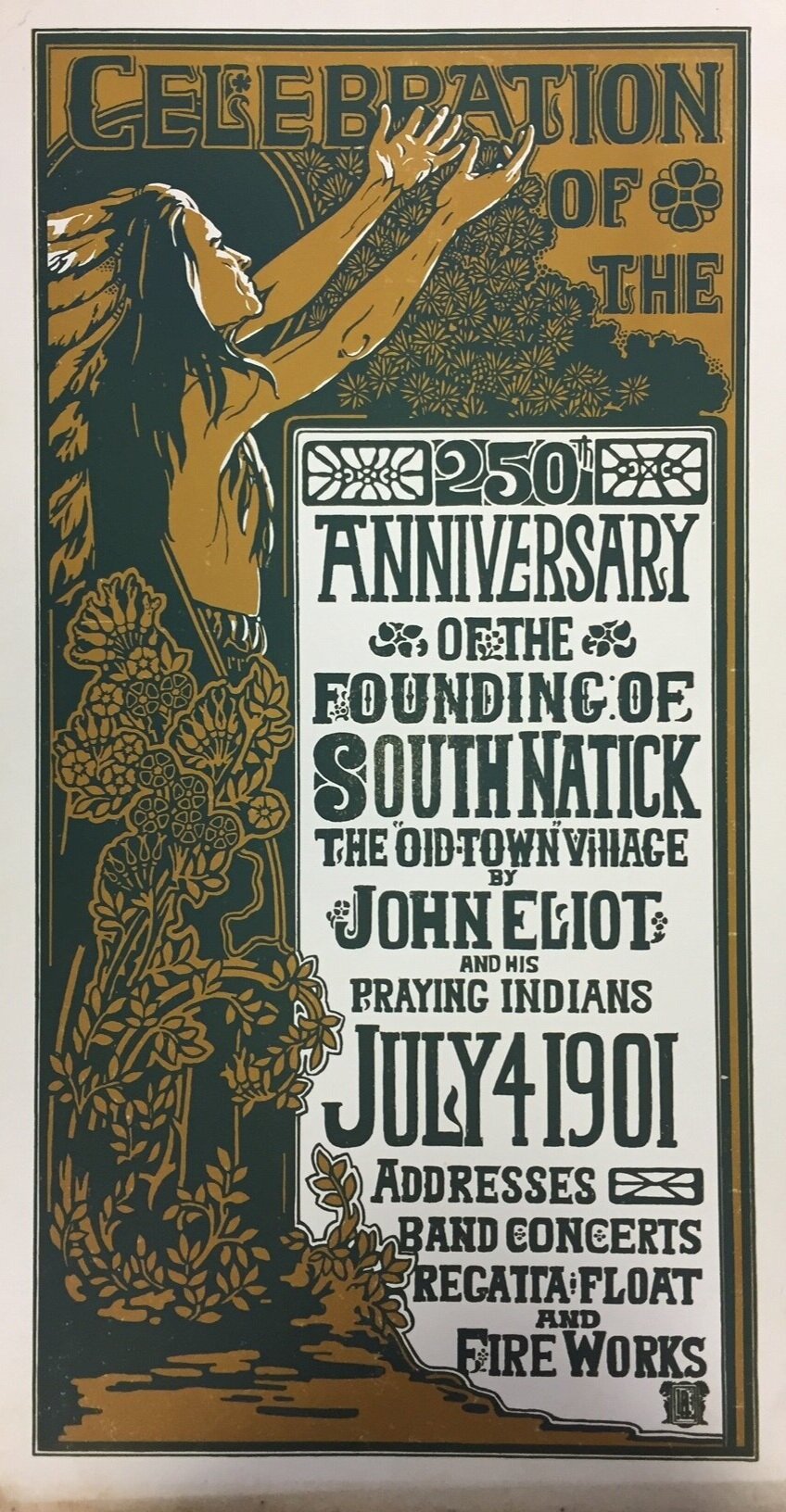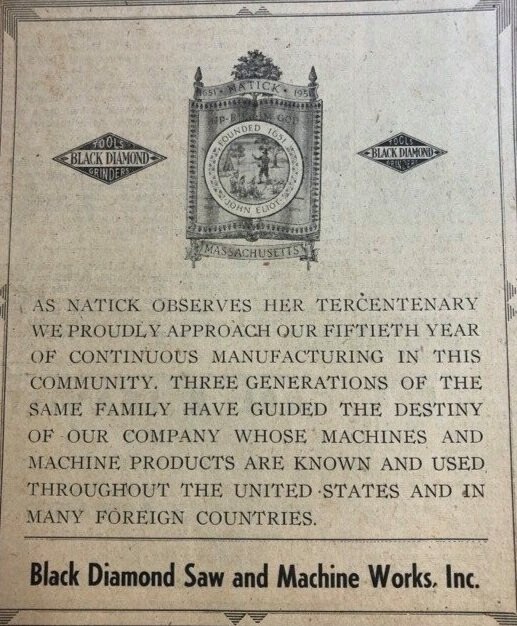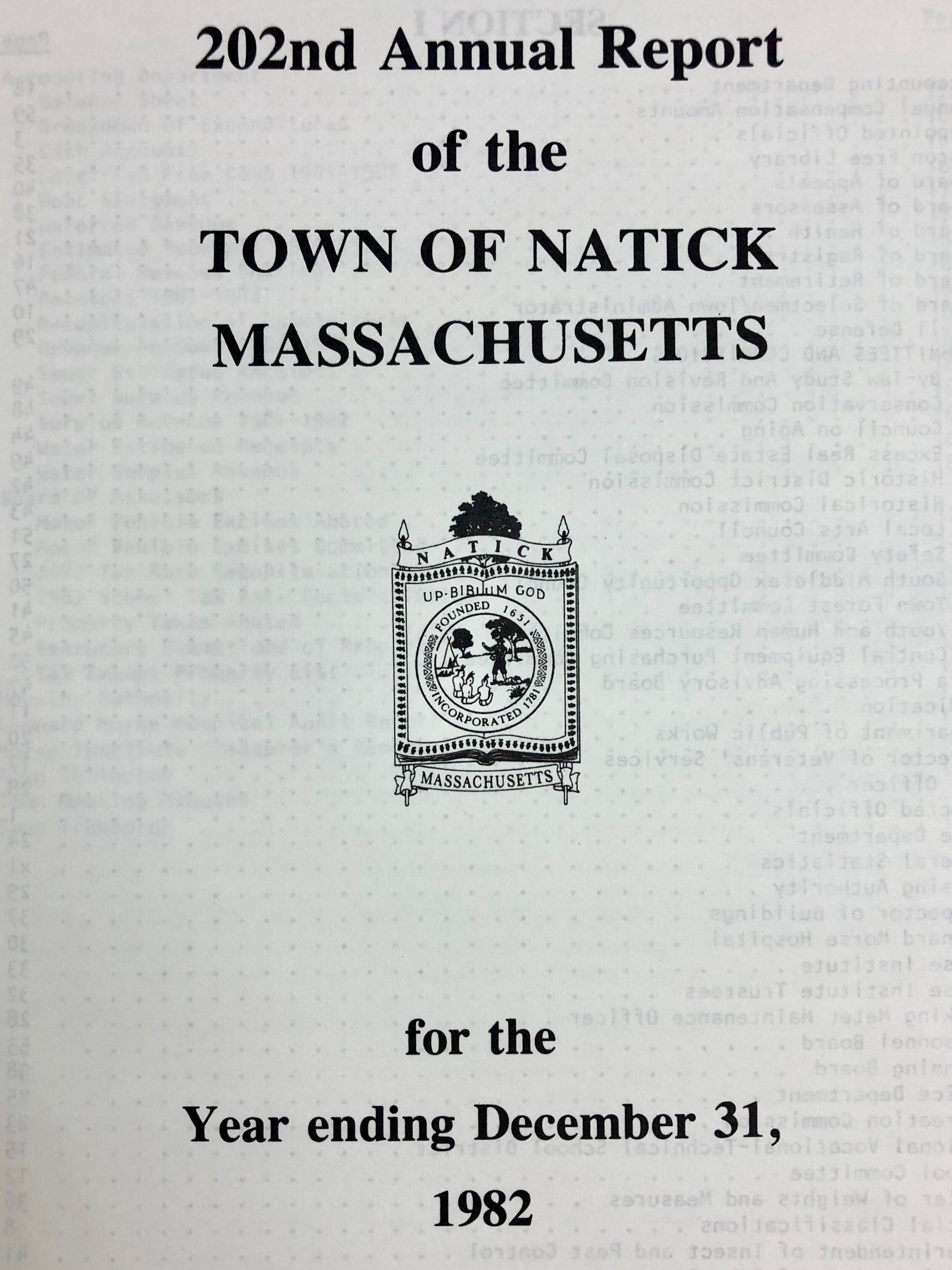
A brief history of Natick town seals, beginning in 1670.
A History of Natick Town Seals
On May 31st, 1670, nearly twenty years after Natick was established as a Praying Town in 1651, residents petitioned the Massachusetts General Court for a town brand. Their goal was to distinguish their animals, especially swine, from those in neighboring communities. In England, courts commonly granted brand marks that reflected the first letter of a town’s name. However, the Massachusetts General Court designated a wholly different symbol for Natick: a bow and arrow. At the time, Natick was home to Algonquian-speaking people from the Massachusett, Nipmuck, and Wampanoag Tribes. The bow and arrow symbol indicated that, despite twenty years of acculturation, English education, and conversion among its residents, the court viewed Natick as distinct from other English towns. (1)
The 1670 brand is stylized and featured in the logo of the Natick Historical Society.
The first appearance of Natick’s 1876 Town Seal in 1876 Town Report (NHS Collections)
Massachusetts incorporated Natick as a town in 1781—by then, English colonists outnumbered Native residents. Over a century later, the 1876 Town Report featured an official seal for the first time. Simple in its design, the seal did not include an image and referred only to Natick’s date of incorporation (February 19th, 1781). It was not until 1899 that the Massachusetts General Court passed legislation requiring every city/town government to have a seal on all official documents. The town of Natick did not immediately pursue a redesign under the new law, and the 1876 redesign remained in use. (2)
The state’s legislation drew increased attention to town seals, however, and two years later, The Natick Bulletin lamented how plain Natick’s seal was compared to neighboring towns. In 1901, The Bulletin organized a schoolchildren competition to design a new seal worthy of the town’s long history. The competition organizers explained that a town seal: (3)
“should be emblematic. The design should not be merely artistic but full of meaning… Geographical features of towns are often represented, and if the scene is well chosen, favorable impressions of the town are gained by outsiders.”
Detail image of the 1876 Town Seal as featured in 1899 Town Report (NHS Collections)
Edith P. Roberts’ first place design (left, NHS Collections), Poster for Natick’s 250th Anniversary in 1901 (right, NHS Collections)
The winner of the 1901 competition was to be given a complete set of Longfellow’s poems bound in calf leather. Many submissions were sent in, and from those, the judges ranked their three favorite designs that would receive prizes for their work: in first place: Edith P. Roberts, in second: Marion Pooke, and in third: Sarah F. Whitney. There was controversy, however, when it was revealed that the winning design was copied from a poster publicizing Natick’s 250th anniversary (1901). As a result of this scandal, the town seal was never officially changed, and the 1876 seal remained in use. (4)
When the town began preparations for its 300th birthday in 1951, the Anniversary Committee adopted an official emblem to publicize all tercentennial events. George T. Hutchings, manager at Newton Memorial Art Company and Natick resident, designed the image. Town departments, civic organizations, and local businesses were encouraged to promote the events using the 300th-anniversary emblem on their stationery and advertising. Many local businesses adopted the suggestion and included Hutchings’ design in their advertisements. A town publication, the Natick List of Residents, also included the emblem on its 1951 cover—prior and subsequent covers featured the 1876 town seal. Although Hutchings’ design was created specifically for the tercentennial celebration and not intended to serve as a town seal, it would become the basis for a new town seal thirty years later. (5)
On October 16, 1980, in the fourth session of Special Town Meeting No. 3, the Town Clerk proposed an article to replace Natick’s town seal (the 1876 seal) with a new seal based on Hutchings’ 1951 design. The proposed new seal would be nearly identical to the 1951 design, except that the years “1651-1951” would be removed from the top scroll. Town Meeting passed the article, and Hutchings’ 1951 design appeared as Natick’s official seal on town publications by 1982. (6)
1951 Tercentennial Program cover featuring Hutchings’ design in the background (left, Morse Institute Library Collections), 1951 newspaper ad featuring Hutchings’ design (center, NHS Collections), 1982 Annual Town Report featuring new official seal based on Hutchings’ 1951 design (right, NHS Collections)
In 1997, a large depiction of the seal painted by residents was installed inside the Natick Town Hall. The project began in 1993 when member of the Select Board John Moran requested that a team of senior residents paint the town seal for installation in the Select Board meeting room. The group that painted the seal changed the design slightly, replacing a teepee (or tipi) with a wigwam/wetu, a home commonly constructed by Native people in New England when Natick was established as a Praying Town. This large depiction of the seal hangs over the main staircase in the entryway of the Natick Town Hall today. The seal also appears on town publications, vehicles, uniforms, stationery, and more. (7)
By:
Niki Lefebvre, Executive Director
Rachel Speyer Besancon, Researcher
Click here to read the Natick Historical Society’s statement on the town seal.
return to 20th century menu:
click here
Sources and further reading:
(1) Virginia DeJohn Anderson, Creatures of Empire: How Domestic Animals Transformed Early America (Oxford, England: Oxford University Press, 2004), 203-204; Jean M. O’Brien, Dispossession by Degrees: Indian Land and Identity in Natick, Massachusetts, 1650-1790 (Cambridge, England: Cambridge University Press, 1997); Proceedings of the Governor and Company of the Massachusetts Bay, 1629-1686. Vol 4: Page 658, Brandmark for Natick Indians. CT0/1700X. Massachusetts Archives. Boston, Massachusetts.
(3) “Natick Town Seal: Twenty-Five Dollars Offered for New Design,” The Natick Bulletin (Natick, MA), July 4, 1924.
(4) “Facts About Natick,” The Natick Bulletin (Natick, MA), n.d.; “Natick Town Seal: Twenty-Five Dollars Offered for New Design,” The Natick Bulletin (Natick, MA), July 4, 1924.
(5) [300th Anniversary Seal], The Natick Bulletin (Natick, MA), c. 1951; Town of Natick Board of Registrars, List of Residents Over Twenty Years of Age, Natick, MA: 1951; The Natick Bulletin (Natick, MA), June 7, 1951; Town of Natick Board of Registrars, List of Residents Over Twenty Years of Age, 1951.
(6) Town of Natick, Annual Town Report, Natick, MA: 1980.
(7) Doyle, Joyce, “Seal signed and almost delivered,” The Natick Bulletin (Natick, MA), July 17, 1997; Natick Council on Aging, A Senior Citizen Project: the seal of the town of Natick, Massachusetts, 1993-1998.







